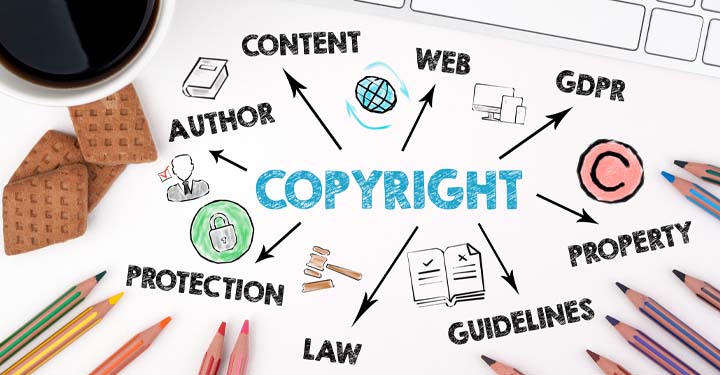
Copyright
Copyright refers to the legal right of the owner of intellectual property. In simpler terms, copyright is the right to copy. This means that the original creators of products and anyone they give authorization to are the only ones with the exclusive right to reproduce the work.
What is copyright according to IPR?
Copyright (or author’s right) is a legal term used to describe the rights that creators have over their literary and artistic works. Works covered by copyright range from books, music, paintings, sculpture, and films, to computer programs, databases, advertisements, maps, and technical drawings.
What is copyright with example?
Copyright meaning tells us that one can get an exclusive right to make a copy or copies of their original work and sell them in the market. For instance, a copyright example protects against selling Michael Jackson’s music as your own. What makes a work copyrighted? The work must be creative and in tangible form.
What are the types of copyright?
The following are the different types of copyrights available in India.
- Literary Works. Copyrights under this category cover works that include the original or unique creation of literature. …
- Dramatic Works. This is also a form of literary work. …
- Musical Works. …
- Artistic Works. …
- Cinematograph Films. …
- Sound Recording.
What are the 5 elements of copyright?
What are the Rights that the Copyright Holder Carries?
- Reproducing the work,
- Derivative work,
- Performing the work Publicly,
- Distributing the work Publicly,
- Publicly display the work,
- Performing sound recordings by digital audio transmission publicly.
What are the 3 copyright laws?
There are three basic requirements for copyright protection: that which is to be protected must be a work of authorship; it must be original; and it must be fixed in a tangible medium of expression.
Why is copyright used?
Copyright is an intellectual property providing protection to the expression of ideas. It protects creators or owners of the original artistic, literary, dramatic, cinematographic film or sound recordings from unauthorized use or copying of the work.
What are the uses of copyright?
Copyright laws work to control ownership, use, and distribution of creative and expressive works. In this economic story about copyright, people think that most creators make their creative works so that they can get paid. When copyright enables creators to get paid, more creators make more works.
What are the main features of copyrights?
Copyright Features
- Copyright is divisible. …
- Copyright is also transferable. …
- Copyright is an intangible property which lasts for only a limited period of time: Copyrights are a form of intangible property, as they confer certain rights to their owners that are not perceivable through the physical senses.
What are the 8 categories of copyright?
The following categories of works are copyrightable:
- Literary, musical and dramatic works.
- Pantomimes and choreographic works.
- Pictorial, graphic and sculptural works.
- Sound recordings.
- Computer programs.
- Architectural works.
Who owns the copyright?
Copyrights are generally owned by the people who create the works of expression, with some important exceptions: If a work is created by an employee in the course of his or her employment, the employer owns the copyright.
Who owns the copyright?
Copyrights are generally owned by the people who create the works of expression, with some important exceptions: If a work is created by an employee in the course of his or her employment, the employer owns the copyright.
